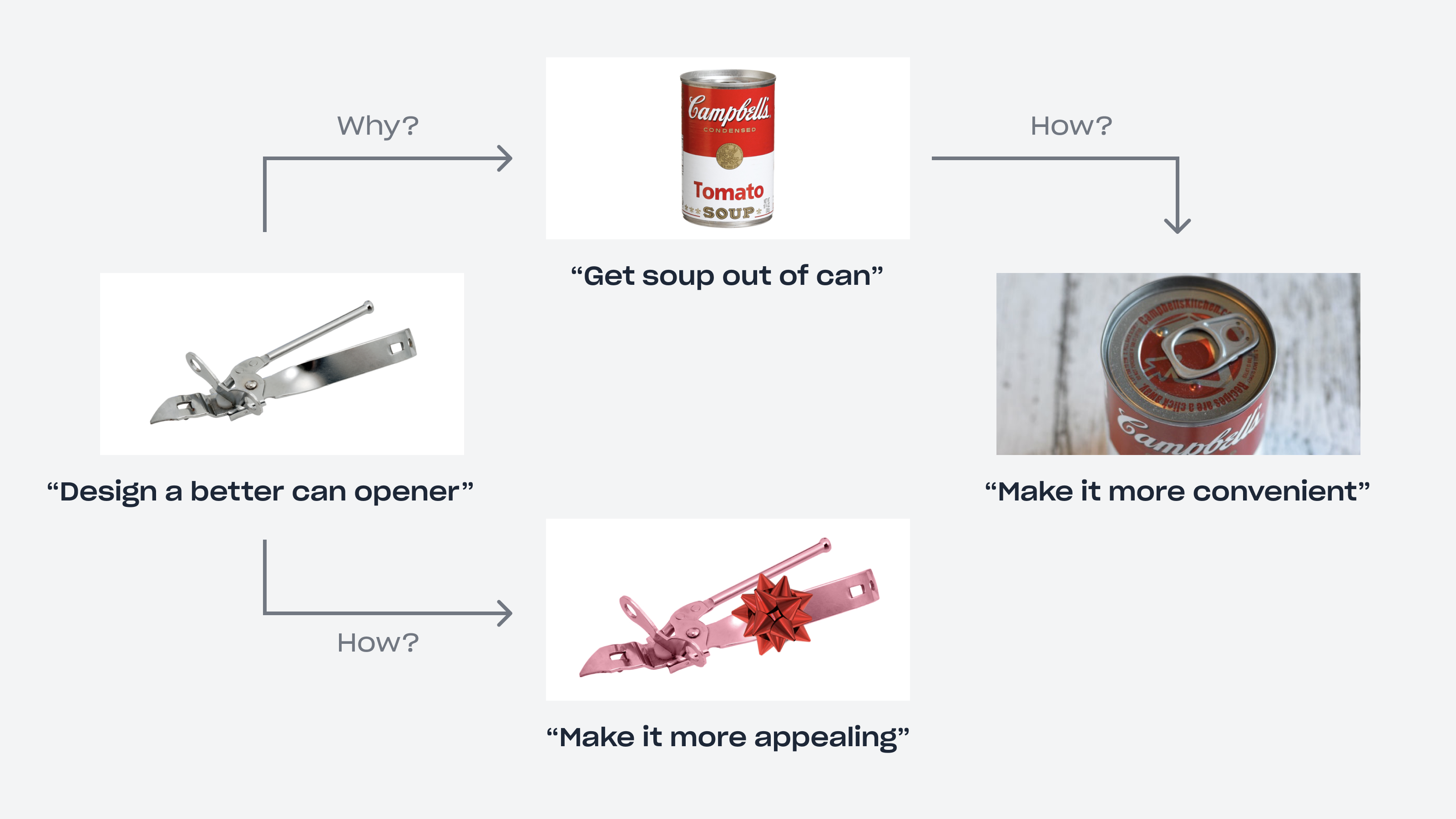Abstraction laddering
PROBLEM SOLVINGAbstraction laddering is a tool for framing problems more skillfully. It helps with defining a problem that you need to solve more clearly. It helps you to move beyond an initial problem statement.
This tool provides you with the ability to ask the right questions to move up and down the ladder.
Move up to expand the scope, to "see the forest for the trees". Move down to develop concrete solutions.
How to use it
- Start with an initial problem statement in the middle of the ladder.
- Ask "why" questions to get more abstract problem statements. This can help you frame the problem differently.
- Ask "how" questions to step toward a more concrete statement or solution. This helps you come up with different problem statements than the one you started with. It enables you to find more innovative solutions.

The great thing about this tool is that you can use it anywhere in the design process. It can be used fairly quickly—in mere minutes—whether you're working alone or in a workshop setting with your team.
What does it look like in practice?
Here's a simple example from Wes O'Haire from Dropbox:

He starts with an initial problem statement: "Design a better can opener". Initially asking "how?", he gets to a more concrete statement "Make it more appealing".
But he can also go up the ladder: "Why do we need a better can opener?"
This leads him to the more abstract problem statement: "Get soup out of the can". From there, he might ask "How might we get the soup out of the can?". That enables defining a different problem statement: "Make it more convenient."